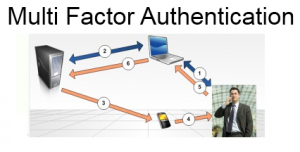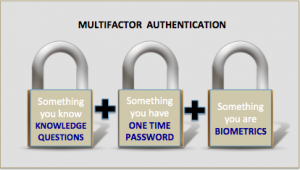Well, we now live in a digital age where passwords are used for almost everythingand security breaches happen so often, you’re probably sick of hearing about them and changing your password. In most cases the news of a security breach does not reach the affected user for days, weeks, or even months. Take the Target’s massive security breach in the US back in Nov of 2014 that affected 70 million accounts and an estimated 700,000 Canadian customers, the CRA last month and just last week eBay. Passwords aren’t as secure as they used to be and even having a strong password sometimes doesn’t completely protect you. To offset just using one password to login to your accounts, many companies are now starting to implement a two-factor or multi-factor authentication process.
What is Multi-factor Authentication?
Two-factor or multi-factor authentication is a simple two-step login feature that asks for more than just your password when you attempt to login to a personal account. It requires both “something you know” (like a username/password) and “something you have” (like your cell phone). So, after you enter your username and password on a site, you’ll normally get a second pin-code texted to your phone and only after you enter that will you get access your account.
This process is a lot more secure than just a password (which is very hackable), keeping unwanted snoopers out of your online accounts. Be that as it may, it assumes you have a second Internet-connected device, like a cell phone that can receive a text message, and you have the time to wait for the PIN code to be sent to you. You normally get it in a matter of a few seconds but for some people that extra step could prove to be a deal breaker. So I guess it will come down to how much do you trust your personal data behind one password?
Some of the more common sites and companies include Google/Gmail, Apple, Facebook, Twitter, Dropbox, Evernote, PayPal, Microsoft, Amazon, and LinkedIn. This is by far not an exhausted list however, if you go to www.twofactorauth.org you will get an updated list of for most of the common sites used by people.




Leave a Reply